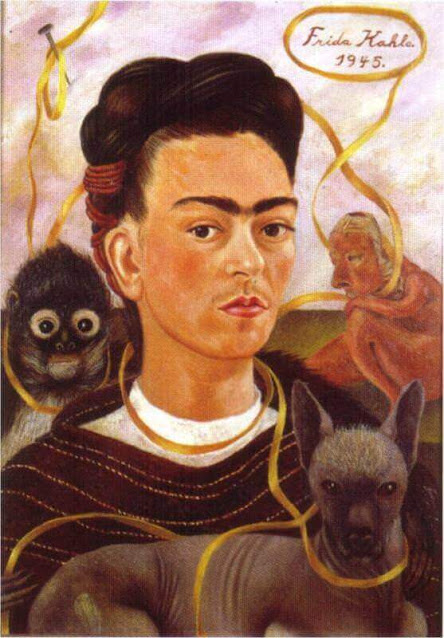March 10, 2018
So . . . who was Dolores Olmedo? A very wealthy Mexican businesswoman and collector, Dolores was Diego Rivera's and Frida Kahlo's friend, and even appears in some of Diego's paintings. After Frida died in 1954, Diego spent the last three years of his life living with her in her home in Acapulco, where he died in 1957. Dolores told Diego that she planned to create a museum to show his work, and he made a list of paintings she should acquire, including 25 pieces by Frida. She did not like either Frida or her work, but she bought up all the work she could anyway, along with 137 works by Diego. In fact, she because the foremost collector of his paintings.
Dolores bought a large piece of land in the Xochimilco district in 1962. She built a beautiful estate home there, which she converted into a museum in 1994. That museum now houses the largest collections of Diego Rivera and Frida Kahlo paintings. She outlived Diego Rivera by 45 years, dying in 2002.
And this is where I wish I had the pictures from my camera. Bob has dozens of photos of the Mexican hairless dogs and a peacock on the property, and six pictures of the museum interior. SIX.
Maybe photos weren't allowed inside? I can't remember. Sigh.
Frida loved dogs, particularly the hairless Xoloitzcuintle (aka Xolo dog, Colima dog, or Mexican hairless dog). Dante, Miguel's dog in the Disney movie Coco, was a Xolo dog.
She sometimes included her favorite dog, Senor Xolotl, in her paintings. This one, Self Portrait with Monkey (1945), is in the Dolores Olmedo Museum, but I had to find this photo on the internet. I wonder why Senor Xolotl's name didn't make it into the title?
I think these dogs were the highlight of the visit to the museum for Bob.
So . . . who was Dolores Olmedo? A very wealthy Mexican businesswoman and collector, Dolores was Diego Rivera's and Frida Kahlo's friend, and even appears in some of Diego's paintings. After Frida died in 1954, Diego spent the last three years of his life living with her in her home in Acapulco, where he died in 1957. Dolores told Diego that she planned to create a museum to show his work, and he made a list of paintings she should acquire, including 25 pieces by Frida. She did not like either Frida or her work, but she bought up all the work she could anyway, along with 137 works by Diego. In fact, she because the foremost collector of his paintings.
Dolores bought a large piece of land in the Xochimilco district in 1962. She built a beautiful estate home there, which she converted into a museum in 1994. That museum now houses the largest collections of Diego Rivera and Frida Kahlo paintings. She outlived Diego Rivera by 45 years, dying in 2002.
And this is where I wish I had the pictures from my camera. Bob has dozens of photos of the Mexican hairless dogs and a peacock on the property, and six pictures of the museum interior. SIX.
Maybe photos weren't allowed inside? I can't remember. Sigh.
Frida loved dogs, particularly the hairless Xoloitzcuintle (aka Xolo dog, Colima dog, or Mexican hairless dog). Dante, Miguel's dog in the Disney movie Coco, was a Xolo dog.
She sometimes included her favorite dog, Senor Xolotl, in her paintings. This one, Self Portrait with Monkey (1945), is in the Dolores Olmedo Museum, but I had to find this photo on the internet. I wonder why Senor Xolotl's name didn't make it into the title?

































